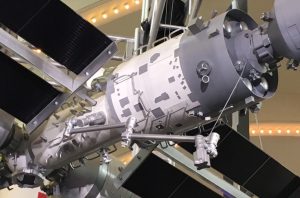Tianhe Module:

China launched the core module of its space station, kicking off a series of key launch missions that aim to complete the construction of the station by the end of next year.
- The Long March-5B Y2 rocket, carrying the Tianhe module, blasted off from the Wenchang Spacecraft Launch Site on the coast of the southern island province of Hainan.
- The Tianhe module will act as the management and control hub of the space station Tiangong, meaning Heavenly Palace, with a node that could dock with up to three spacecraft at a time for short stays, or two for long
- Tianhe has a total length of 16.6 meters, a maximum diameter of 4.2 meters, and a take-off mass of 22.5 tonnes, and is the largest spacecraft developed by China.
- The space station will be a T shape with the core module at the centre and a lab capsule on each side.
- The station will operate in the low-Earth orbit at an altitude from 340 km to 450 km. It has a designed lifespan of 10 years, but experts believe it could last more than 15 years with appropriate maintenance and repairs.
- The Chinese space station is expected to be a competitor to the aging International Space Station (ISS) which is a modular space station in low Earth orbit.
- It is a multinational collaborative project involving five participating space agencies which included NASA, (US), Roscomos (Russia), JAXA (Japan), ESA (Europe), and CSA (Canada).




